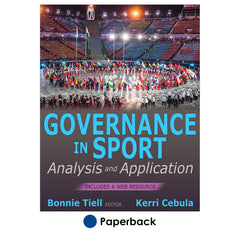What is leadership in sport organizations?
This is an excerpt from Governance in Sport With Web Resource by Bonnie Tiell,Kerri Cebula.
By Bonnie Tiell and Kelley Walton
Leadership Styles
Leadership style is the way leaders provide direction and motivate others. The styles proposed by Lewin, Lippet, and White (1939), Chelladurai (1978, 1984), and Goleman (2000) continue to resonate in the study of leadership and its application to the sports industry.
Classic Leadership Styles
Lewin et al. (1939) proposed that leaders demonstrate one of three styles of leadership: authoritarian, participative, or laissez-faire. These styles are generally used to describe the ways individuals lead, but as contingency theories suggest, a leader may select among the different styles for different audiences and situations.
The authoritarian, authoritative, or autocratic leader uses strong, directive actions to control the rules, regulations, activities, and relationships in the work environment. An autocratic leader often provides specific instructions or orders for achieving a task and rarely gives followers any authority in the choice of methods. The autocratic style has also been referred to as a militaristic or dictator style of leadership common to many elite Division I football and men's basketball coaches.
The participative style is exhibited by leaders who are considered fair and egalitarian and who involve others in decision making. Examples might include the sports professionals who serve as executives for national and global organizations (e.g., IOC, NCAA). The participative leadership style has also been described as a democratic style.
The laissez-faire or free-reign leadership style is exhibited by those who have little interaction with subordinates. As contingency leadership theories suggest, it is a style that may be most appropriate if a leader is supported by a competent and experienced staff in routine situations. For example, the executive director of a municipal recreation department with oversight for all summer camps may use a laissez-faire approach to supervise the youth sport director who has successfully organized the camp for the past seven years.
Multidimensional Leadership Style
Chelladurai (1978), a distinguished scholar in sport management, developed a multidimensional leadership model based on Lewin et al.'s three traditional styles. The model blends instructional behaviors (training), motivation tendencies, and two of Lewin's decision-making styles. The convergence of factors facilitates the choice of the best authoritative or participative leadership style based on the characteristics of the leader, situational characteristics, and the follower's “preferred” leadership behavior. Similar to the contingency theories on leadership, the result is a behavioral style that is best suited to the context of the situation. The multidimensional model suggests that effective leaders are those who can effectively modify their leadership style to meet the needs of the situation and the audience.
Contemporary Leadership Styles
Dan Goleman (2000), the authority on emotional and social intelligence, expanded on Lewin et al.'s model to develop six types of leadership styles: (1) coercive, (2) authoritative, (3) affiliative, (4) democratic, (5) pacesetting, and (6) coaching.
Goleman's approach to the field of leadership is postmodern and pragmatic. The researcher equates leadership styles with a set of golf clubs. Lower-handicap golfers instinctively know exactly which club to pull out in a given situation and are adept at using more than one (Goleman, 2000). Similarly, effective leaders with a governing role in sports can successfully employ a given style when necessary to obtain the desired results.
Goleman's work suggests the advantage to sport organizations of employing people who are strong in a particular leadership style that can compensate for deficiencies of the owner or other top authority. Table 2.5 provides a definition of each leadership style and an application of each to governing associations in the sport industry.



Get the latest insights with regular newsletters, plus periodic product information and special insider offers.
JOIN NOW


